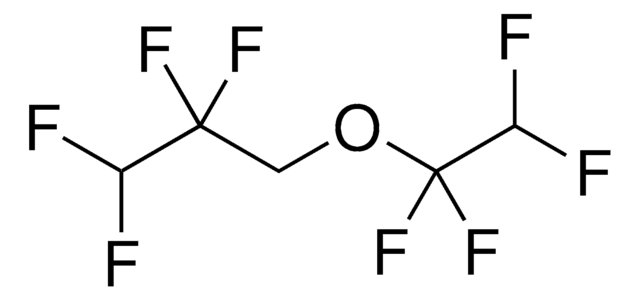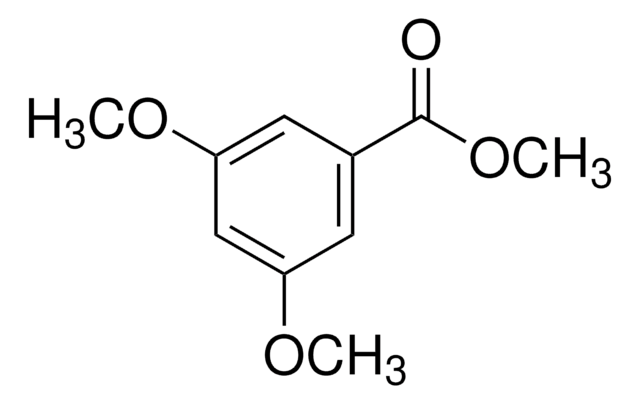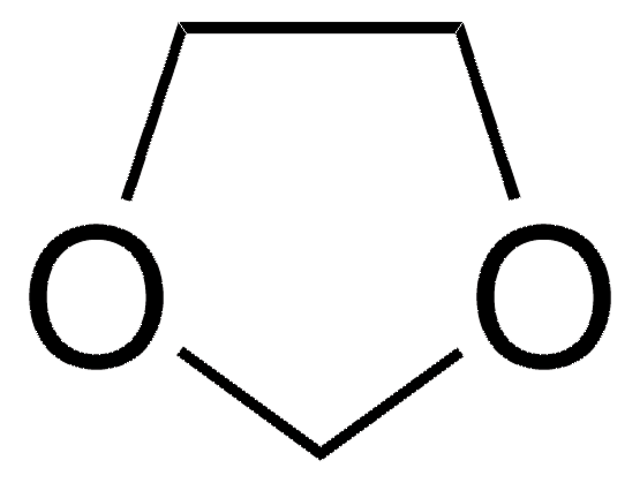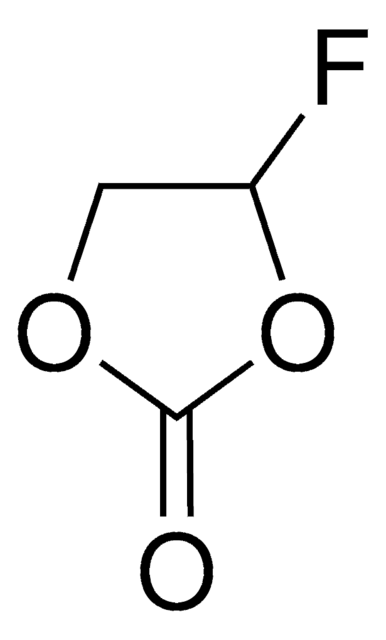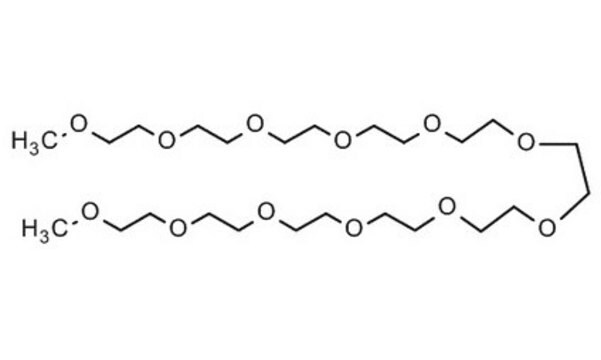172405
Tetraethylene glycol dimethyl ether
≥99%, cross-linking reagent click chemistry
Sinonimo/i:
2,5,8,11,14-Pentaoxapentadecane, Bis[2-(2-methoxyethoxy)ethyl] ether, Dimethoxytetraethylene glycol, Dimethyltetraglycol, Tetraglyme
About This Item
Prodotti consigliati
product name
Tetraethylene glycol dimethyl ether, ≥99%
Densità del vapore
7.7 (vs air)
Livello qualitativo
Tensione di vapore
<0.01 mmHg ( 20 °C)
Saggio
≥99%
≥99.0% (GC)
Forma fisica
liquid
Temp. autoaccensione
510 °F
Impiego in reazioni chimiche
reagent type: cross-linking reagent
reaction type: click chemistry
Impurezze
≤1.0% Water (Karl Fischer)
≤50 ppm Trace peroxide (as H2O2)
Indice di rifrazione
n20/D 1.432 (lit.)
P. eboll.
275-276 °C (lit.)
Punto di fusione
−30 °C (lit.)
Densità
1.009 g/mL at 25 °C (lit.)
Architettura del polimero
shape: linear
functionality: homobifunctional
Stringa SMILE
COCCOCCOCCOCCOC
InChI
1S/C10H22O5/c1-11-3-5-13-7-9-15-10-8-14-6-4-12-2/h3-10H2,1-2H3
ZUHZGEOKBKGPSW-UHFFFAOYSA-N
Cerchi prodotti simili? Visita Guida al confronto tra prodotti
Descrizione generale
Applicazioni
Note legali
Avvertenze
Danger
Indicazioni di pericolo
Consigli di prudenza
Classi di pericolo
Repr. 1B
Rischi supp
Codice della classe di stoccaggio
6.1C - Combustible acute toxic Cat.3 / toxic compounds or compounds which causing chronic effects
Classe di pericolosità dell'acqua (WGK)
WGK 1
Punto d’infiammabilità (°F)
276.8 °F - closed cup
Punto d’infiammabilità (°C)
136 °C - closed cup
Dispositivi di protezione individuale
Eyeshields, Faceshields, Gloves, type ABEK (EN14387) respirator filter
Scegli una delle versioni più recenti:
Possiedi già questo prodotto?
I documenti relativi ai prodotti acquistati recentemente sono disponibili nell’Archivio dei documenti.
I clienti hanno visto anche
Il team dei nostri ricercatori vanta grande esperienza in tutte le aree della ricerca quali Life Science, scienza dei materiali, sintesi chimica, cromatografia, discipline analitiche, ecc..
Contatta l'Assistenza Tecnica.

